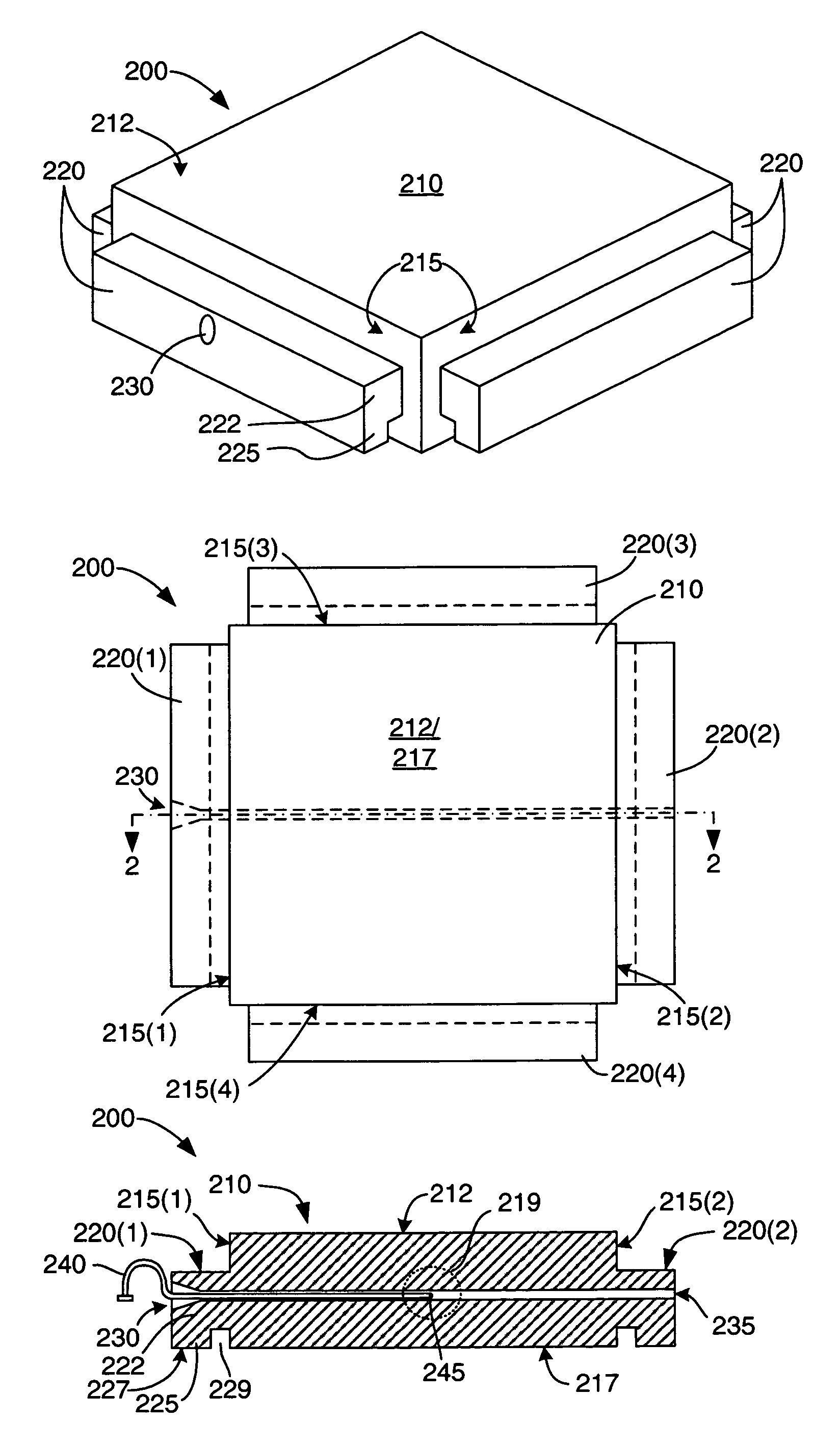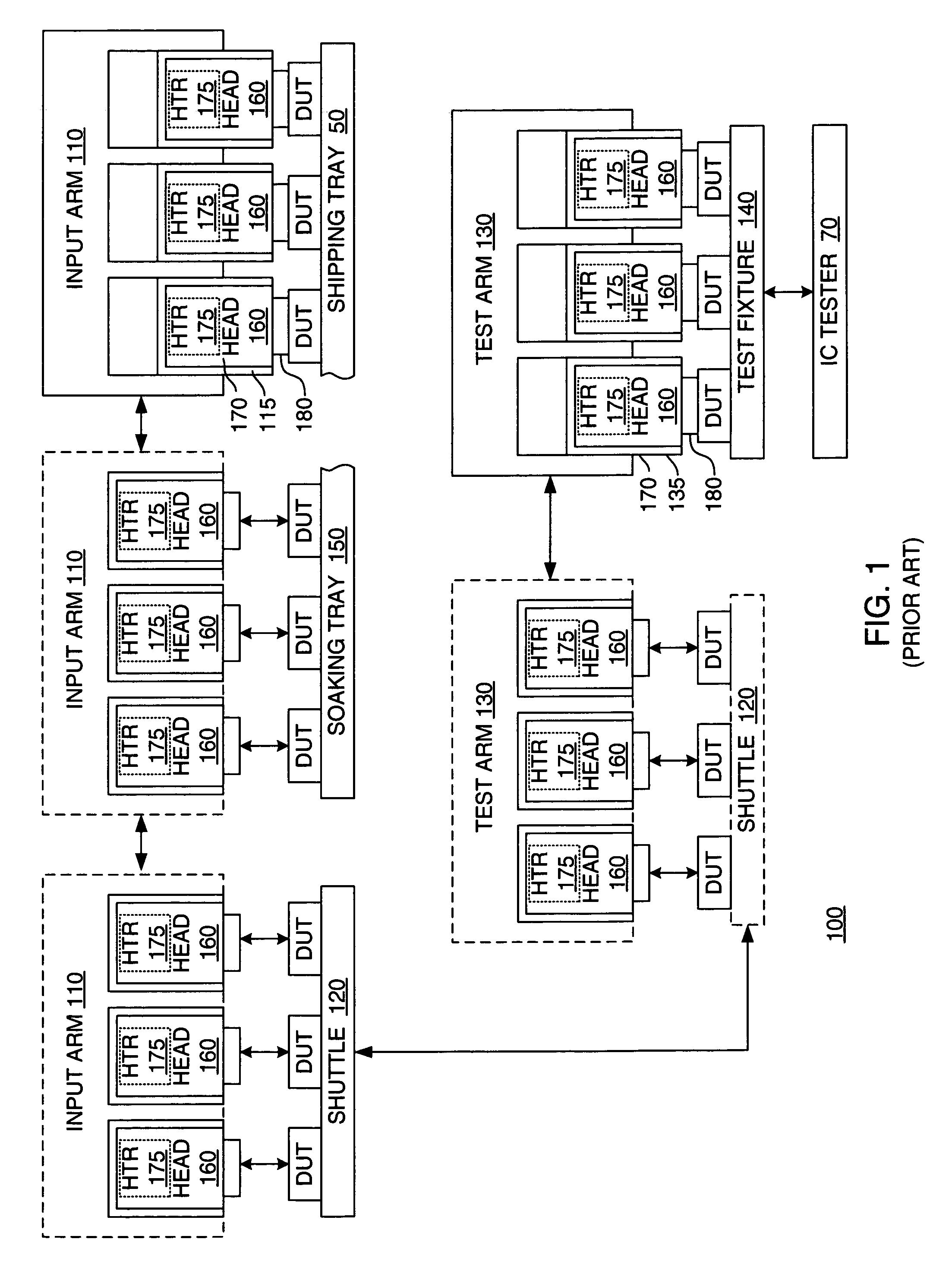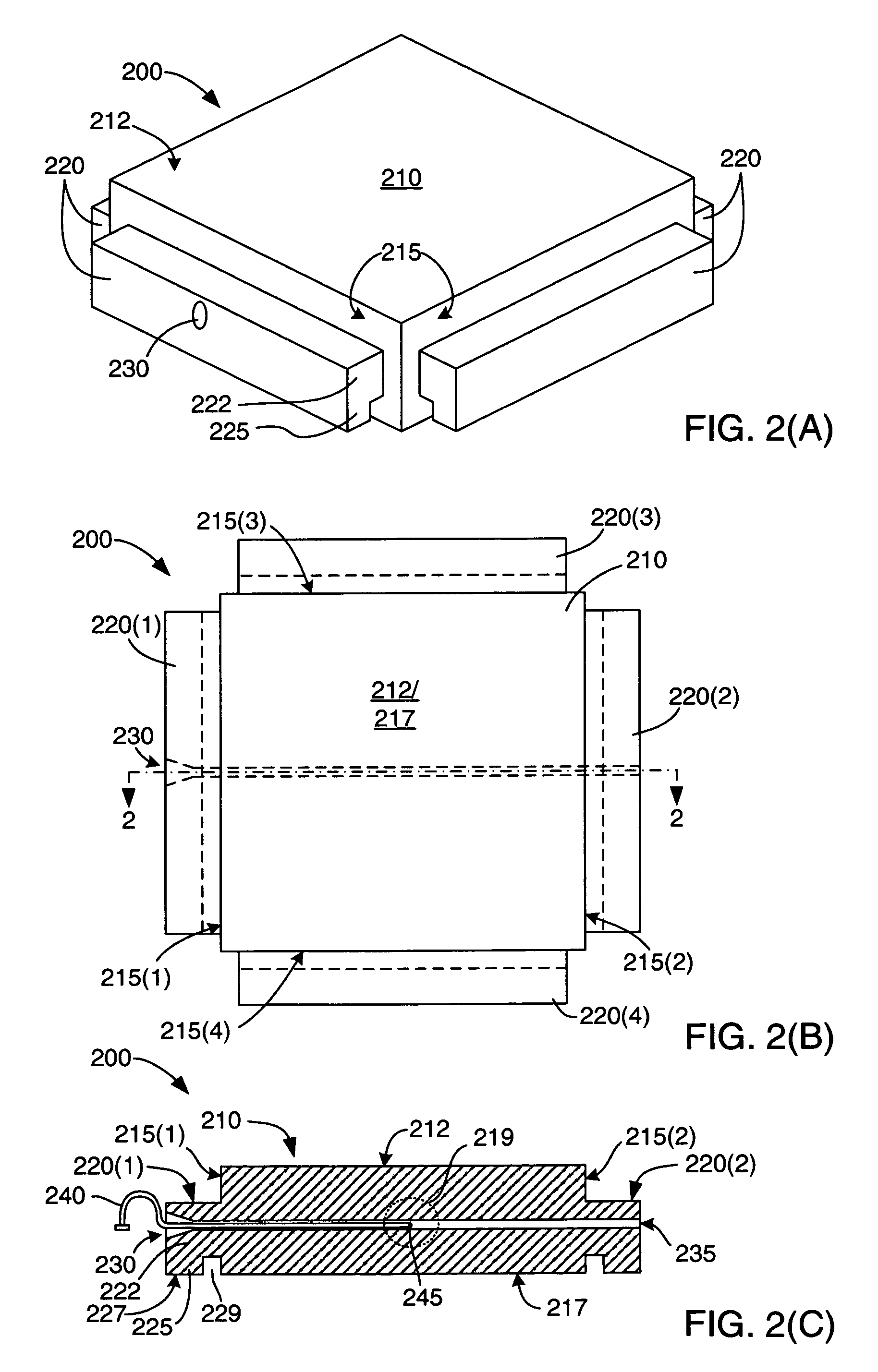Method and apparatus for verifying temperature during integrated circuit thermal testing
a technology for thermal testing and integrated circuits, which is applied in the direction of electrical testing, measurement devices, instruments, etc., can solve the problems of duts falling out of the specified temperature range, other (typically less expensive) ic devices not including this temperature diode, and actual temperature of duts deviating significantly from the temperature, so as to achieve accurate estimation of actual test temperatur
- Summary
- Abstract
- Description
- Claims
- Application Information
AI Technical Summary
Benefits of technology
Problems solved by technology
Method used
Image
Examples
Embodiment Construction
[0022]An exemplary embodiment of the present invention is described below as being utilized to verify the thermal testing temperature of QFP-type IC that do not include on-chip temperature measuring diodes. Those of ordinary skill in the art will recognize that the methods and structures associated with the present invention may be extended to IC package types other than QFP-type devices, and may be utilized to verify temperatures read from ICs having on-chip temperature measuring diodes. Therefore, the present invention is limited only by the appended claims.
[0023]FIGS. 2(A), 2(B), and 2(C) show an exemplary test block 200 that is utilized in the manner described below to verity the temperature of a QFP-type IC device during thermal testing. As described in additional detail below, test block 200 is utilized to measure the temperature between a test head and a test socket in an ATE system. This temperature is then used to verify that QFP-type IC devices subsequently (or previously)...
PUM
 Login to View More
Login to View More Abstract
Description
Claims
Application Information
 Login to View More
Login to View More - R&D
- Intellectual Property
- Life Sciences
- Materials
- Tech Scout
- Unparalleled Data Quality
- Higher Quality Content
- 60% Fewer Hallucinations
Browse by: Latest US Patents, China's latest patents, Technical Efficacy Thesaurus, Application Domain, Technology Topic, Popular Technical Reports.
© 2025 PatSnap. All rights reserved.Legal|Privacy policy|Modern Slavery Act Transparency Statement|Sitemap|About US| Contact US: help@patsnap.com



